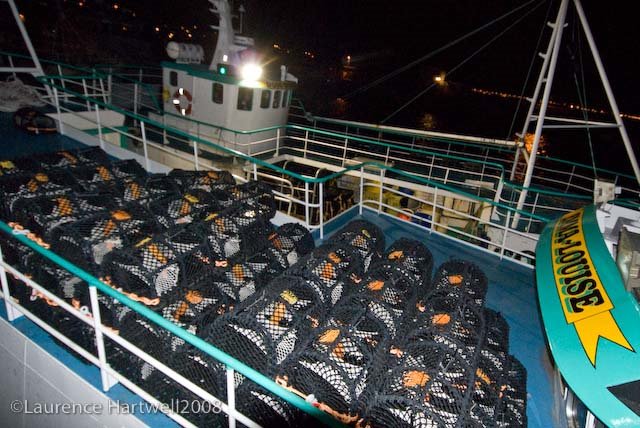There is growing concern among the inshore fishing sector that some of the English IFCAs are contemplating more draconian restrictions on the use of static fishing gear than can be scientifically justified. From the first day that the MPA Fishing Coalition (MPAC) was formed, it has emphasised that a practical understanding of how fishing gears operate, what their environmental footprint is and whether or not they pose a risk, are key to implementing a rational management regime within the growing UK network of marine protected areas (MPA).
Potting occurs in many designated MPAs and at sites earmarked for possible future designation
Apparent uncertainty – or lack of understanding – over the effects of static gears upon conservation features is leading some regulators in England to consider the inclusion of static gear within risk assessments for European marine sites and the newly designated marine conservation zones (MCZ). Any management proposals following this process are expected to come forward for inshore sites from 2015.
MPAC chairman Dr Stephen Lockwood said, "an understanding of the operation of these gears should reveal that it is highly unlikely such gears could have a significant effect on seabed features. With potting, for example, on the basis of some very conservative assumptions, MPAC has calculated that even in the most intensively fished areas, gear would come into contact with any specific point on the seabed at a rate of less than once in every 30 years. In practice, for most fisheries, the interaction rate would be significantly lower than that. Any higher levels of fishing activity are unrealistic as gear conflict would become such a problem that it would be impractical to fish, so the intensity of fishing effort becomes self-limiting.
"This analysis is consistent with findings elsewhere, such as from the FishMap Môn project commissioned by the statutory conservation body Natural Resources Wales. The project mapped levels of fishing activity around Ynys Môn (Anglesey) and compared it with the sensitivity of marine features of conservation interest. When this was combined with knowledge on the levels of natural disturbance for inshore sites, where static gear is predominantly used, then it became increasingly difficult to see how the supposed environmental pressures generated by these fisheries could compare with the natural environmental variability on surrounding conditions. The FishMap Môn project demonstrated quite clearly that with the simple collection and collation of local knowledge and information, marine managers can eliminate uncertainty and discount the need for additional management measures.
"The key to resolving this whole issue is ‘local knowledge’. It is vitally important, therefore that local industry throughout the UK gets directly involved with discussions with regulators on MPA management in order to show what risk the operation of fishing gears actually pose."
Static gear fisheries operate within numerous designated MPAs, as well as sites earmarked for possible future designation.
"In the case of English MCZs, many sites were selected by stakeholder groups in predominantly static-gear fishing areas on the basis that no additional management would be necessary for such fisheries. If that is to change, then the legitimate basis for the selection of many sites would fall apart,” Dr Lockwood said.
Full story courtesy of the NFFO.
Welcome to Through the Gaps, the UK fishing industry's most comprehensive information and image resource. Newlyn is England's largest fish market and where over 50 species are regularly landed from handline, trawl, net, ring net and pot vessels including #MSC Certified #Hake, #Cornish Sardine, handlined bass, pollack and mackerel. Art work, graphics and digital fishing industry images available from stock or on commission.
